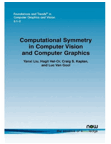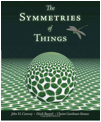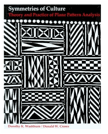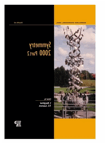|
CSE 597: Special Topics - Group Theory-Based Pattern Discovery
Instructor: Dr. Yanxi Liu
This is a course on computational methods for real world digital data, which can be across scale, modality and application domains. We aim at developing algorithms for automatic pattern discovery, comparison and learning. The content is based on a unique combination of group theory, statistical learning theory, and human/animal perception, with an emphasis on discovering visually appealing patterns automatically with extensive hands-on trainings on large data sets. Students will learn effective computational models applied to real, large data sets in computer vision, computer graphics, robotics and medical image analysis. The emphasis is on learning theory from applications, hands-on computational experience and on producing state of the art, publishable research outcomes.
Regularity is an essential and ubiquitous concept in nature, science and art. Numerous biological, natural or man-made structures exhibit regularities, abstracted by symmetries, as a fundamental design principle or as an essential aspect of their function. Whether by evolution or by design, symmetry implies potential structural efficiencies that make it universally appealing. Much of our understanding of the world is based on the perception and recognition of recurring structures (in space and/or time), and so is our sense of beauty. With increasing amount and variety of digitized data, seeking for patterns systematically has become increasingly pertinent and necessary. This course concentrates on rigorous theory (group theory), keen observations and computational (automatic) discovery of patterns in various data forms in our daily life and our research. We aim to develop effective computational treatments of regularity to capture real world regular or near-regular patterns in spite of uncertainty.
Group theory, the ultimate mathematical theory for symmetry will not be textbook-learned but practiced on real world digitized data sets. The course abandons the classical definition-theorem-proof model, instead, relies heavily on your senses and intuitions, both visual and tactile, resulting in a solid understanding of group theory that you can touch! The key challenge of turning the concept of mathematical symmetry/regularity into a computationally useful tool is to figure out how to apply the concise group theory to the noisy albeit often near-regular real-world. So far, a robust, general symmetry (covering all types of symmetries) detection algorithm for real world digital data (images or otherwise) remains elusive. This challenge leads to the unique direction this course will explore “computational symmetry” (Liu 2000).
Computation forms the key component of this course, which links theory and applications. We shall start with intuition, learn the basic mathematical concepts and develop state of the art computer algorithms for real-world problems. Our goal is to build “bridges” connecting symmetry, symmetry group theory, general and specific regularities with real-world applications.
Course Grading
30% - Written Homework
20% - Presentations/Discussions
50% - Term Project
Previous Course Websites
ETH - Fall 2016
Stanford - Winter 2014
References

|
Computational Symmetry in Computer Vision and Computer Graphics
Yanxi Liu, Hagit Hel-Or, Craig S. Kaplan, and Luc Van Gool
Foundations and Trends in Computer Graphics and Vision 2010
Volume 5, Number 1-2, Pages 199
|

|
The Symmetries of Things
John H. Conway, Heidi Burgiel and Chaim Goodman-Strauss (May 2, 2008)
A. K. Peters, Ltd. Wellesley, Massachusetts. Pages 426
|

|
Symmetries of Culture: Theory and Practice of Plane Pattern Analysis
Dorothy K. Washburn, Donald W. Crowe 1991
|

|
Computational Symmetry --- a book chapter in Symmetry 2000
Portland Press, London, Vol. 80/1, January, 2002, pp. 231 - 245
|

|
On Growth and Form
D'Arcy Wentworth Thompson
|
|



